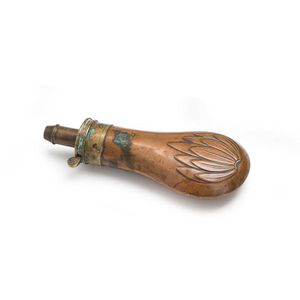George II Mahogany Tea Table
You must be a subscriber, and be logged in to view price and dealer details.
Subscribe Now to view actual auction price for this item
When you subscribe, you have the option of setting the currency in which to display prices to $Au, $US, $NZ or Stg.
- Circa - A Latin term meaning 'about', often used in the antique trade to give an approximate date for the piece, usually considered to be five years on either side of the circa year. Thus, circa 1900 means the piece was made about 1900, probably between 1895 and 1905. The expression is sometimes abbreviated to c.1900.
- Foldover - A term used when describing card, tea or games tables, where the top folds over onto itself when not in use. The interior surfaces that are exposed when the top is open may be polished (in the case of tea tables) or baized (for card or games tables).
- Mahogany - Mahogany is a dense, close grained red-coloured timber from the West Indies and Central America. It was first imported into Europe in the the early 18th century and its use continued through the 19th century. It was popular for furniture making because of its strength, the wide boards available, the distinctive grain on some boards, termed flame mahogany and the rich warm colour of the timber when it was polished.. The "flame" was produced where a limb grew out from the trunk of the tree, and this timber was usually sliced into veneers for feature panels on doors, backs and cornices.
Some terms used to describe mahogany relate to the country from which it originally came, such as "Cuban" mahogany, "Honduras" mahogany etc. However unless the wood has been tested the names assigned are more a selling feature, rather than a true indication of the timber's origin. - Turning - Any part of a piece of furniture that has been turned and shaped with chisels on a lathe. Turned sections include legs, columns, feet, finials, pedestals, stretchers, spindles etc. There have been many varieties and fashions over the centuries: baluster, melon, barley-sugar, bobbin, cotton-reel, rope-twist, and so on. Split turning implies a turned section that has been cut in half lengthwise and applied to a cabinet front as a false decorative support.
- George Ii - George II (1683 - 1760) was King of Great Britain and Ireland from 1727 until his death in 1760.
- Frieze - An architectural term denoting the flat, shaped or convex horizontal surface of furniture, between the architrave and the cornice, usually found on a cabinet or bookcase, or on desks and tables where it may include drawers, the area between the top and the legs. In ceramics, the term refers to the banding, of usually a repeating pattern, on the rims of plates and vases.
This item has been included into following indexes:
Visually similar items

Two brass mounted tea caddies, English, circa 1840, 20 cm and 18 cm wide

Small pistol powder flask, brass & copper. 19th century. 13 cm

A pair of Chinese black lacquer painted cabinets, the two door cabinets painted to the top, front and sides with florals and geometric patterns, brass lock plates, hinges and handles. 61.5 x 31 x 92 cm

George III mahogany and ebony strung bowfront washstand, circa 1800, 89 cm high, 45 cm long, 44.5 cm deep
